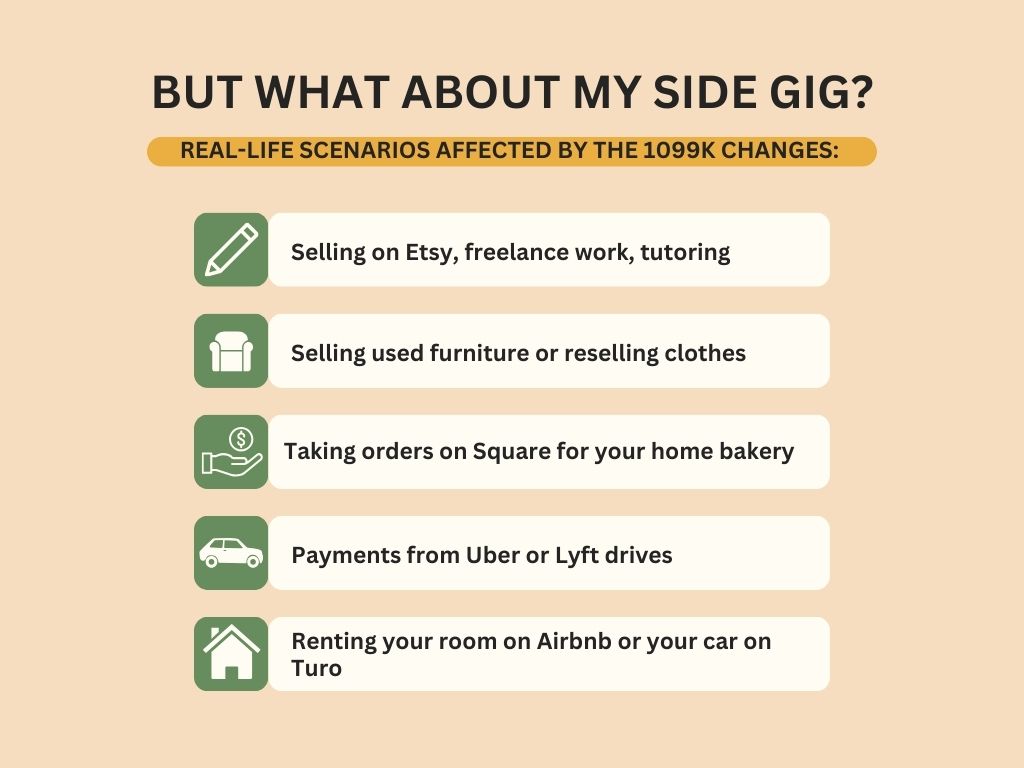As the kids are saying these days: SMH.
%20(1)(1).gif)
At what? The IRS.
Another commissioner is out the door. Billy Long is packing his bags for Iceland (yes, really), after about two months on the job.
And the service you actually get from the IRS isn’t improving either. Those self-service kiosks at the IRS walk-in centers are now gone all point toward the IRS’s big “self-service” push when it comes to interacting with them.
But what it actually means is yet one less place to get actual help with your taxes.
Meanwhile, fraudsters are dialing in to the IRS Practitioner Priority Service line pretending to be us (your tax professionals)… and getting through. That means unauthorized people have filed fake forms, snatched refunds, and even walked away with sensitive tax info.
All of this just underscores the obvious: you need someone in your corner who knows how to navigate this storm.
I’ve got some tested navigational skills and am here for you when you’re ready: 414-325-2040
Because the IRS isn’t making it easier or safer for you to handle things on your own.
And one way that I want to be in your corner right now is by helping you understand all the ways this One Big Beautiful Bill Act impacts you. Today’s focus? Changes to Form 1099-K, and what that means for your Milwaukee side hustle.
1099-K Changes Could Save Paperwork (Not Taxes) for Milwaukee Gig Workers
“Things work out best for those who make the best of how things work out.” —John Wooden
Quick Answers: 1099-K Changes
- New 1099-K threshold for receiving a 1099-K in 2025 and beyond: More than 20K in gross payments AND more than 200 transactions (both conditions must be met).
- If you’re under those limits: You may not receive a 1099-K, but the income is still taxable.
- This new threshold reverses the planned phased-in thresholds of 5K for 2024, 2.5K for 2025, and 600 dollars for 2026
- Applies to payments via third-party networks like PayPal, Venmo, Etsy, Square, Airbnb, Uber, and similar platforms.
- Backup withholding rules will also follow the reinstated threshold, starting in 2025.
Maybe you’re designing logos on the weekends. Driving for Uber at night. Selling thrift flips on Poshmark. Whatever your side hustle is, you’re part of a huge shift that’s happening.
The gig economy is expanding at roughly three times the rate of the overall U.S. workforce, with projections showing over half the workforce participating by 2027.
With the passage of the One Big Beautiful Bill Act (OBBBA), the IRS is reverting Form 1099-K reporting requirements back to previous (higher) thresholds.
Meaning, fewer 1099-Ks will be hitting mailboxes… but here’s the key takeaway: income is still taxable whether you get the form or not.
So, here’s what these 1099-K changes are all about and what it means for your Southeastern Wisconsin side hustle.
What Are The 1099-K Changes?
First, a little background: Form 1099-K is the informational return that third-party payment networks must issue if you exceed certain payment thresholds. Think PayPal, Venmo, Cash App (for business transactions), Etsy, Airbnb, Uber, Lyft, eBay, Square.
AKA, the platforms that facilitate payments between buyers and sellers.
The OBBBA permanently reinstates the original 1099-K reporting thresholds of 20K in gross payments AND over 200 transactions in a year. The ruling applies to all tax years moving forward, including 2025.
Even more, backup withholding standards (i.e., how the IRS makes sure you pay taxes on income that isn’t subject to standard withholding) are now tied to these same thresholds starting in 2025.
But What About MY Side Gig?
Not sure if this applies to you? Let’s break down some real-life side hustle scenarios:
- Weekend Side Hustle: For example, selling jewelry on Etsy, doing occasional freelance copywriting, tutoring and getting paid via Venmo.
- Cleaning Out Your Garage: Selling your used furniture on Facebook Marketplace or reselling clothes on Poshmark.
- Small Business on a Smaller Scale: For instance, if you’re a home baker using Square for orders.
- Rideshare Drivers: For companies like Uber and Lyft.
- Property or Vehicle Rentals: This could involve renting your spare bedroom on Airbnb or renting your SUV on Turo.
For any of these scenarios, below the thresholds = no 1099-K… but it’s still taxable income. Hit above the thresholds, and you’ll earn a fun 1099-K form to file at tax time.

What Does This Mean For My Taxes?
First, less paperwork does not mean less taxable income. The 1099-K threshold is a platform reporting requirement, not a taxpayer filing requirement. If you earn 5K from freelance writing via PayPal, it’s taxable whether you get a 1099-K or not.
And self-employment tax still applies at the federal level (15.3 percent combined for Social Security and Medicare). This is calculated on net profit (gross income minus deductible expenses).
So, make sure you’re tracking all income and expenses meticulously. Use a spreadsheet, bookkeeping software, or even a dedicated business bank account. And keep receipts, mileage logs, invoices, and any platform payout reports.
Don’t rely solely on forms, because 1099-Ks are incomplete. If you get paid in cash, checks, or direct bank transfers, the IRS won’t see it on a 1099. But you still have to report it.
And be aware: The IRS can still match data. Payment platforms share aggregate transaction data with the IRS. Discrepancies between what they see and what you report can trigger a notice or audit.
FAQ
“If I don’t get a 1099-K, do I still have to report my income?”
Yes. The IRS expects you to report all taxable income (if you have net earnings from self-employment of 400 dollars or more), whether or not you receive a 1099-K (or any 1099, for that matter).
“What about selling personal items at a loss?”
If you sell for less than what you paid, the sale is generally not taxable. But if you sell at a profit, it’s capital gain income, even if no 1099-K is issued.
“Can I deduct my expenses if I’m under the threshold?”
Absolutely. Even if you don’t get a form, you can deduct ordinary and necessary business expenses (e.g., supplies, marketing, mileage).
“What counts as a ‘transaction’ for the 200 rule?”
A single payment from a buyer is one transaction. Splitting payments doesn’t multiply the count if they’re part of one sale.
“How does backup withholding tie in?”
If you fail to provide a valid taxpayer identification number (ITIN) to a payment platform, they may withhold 24 percent of your payments once you exceed the 20K/200 transaction threshold (starting in 2025).
“Do I still need quarterly estimated tax payments for side hustle income?”
Yes, if you expect to owe 1K or more in tax for the year after withholding and credits.
“What if I get paid through multiple platforms?”
The threshold applies per platform, not in total. So 12K on PayPal and 9K on Venmo won’t trigger a 1099-K from either (but you still report all 21K).
What this means for you
Yes, these 1099-K changes probably mean fewer tax forms cluttering your inbox. But don’t mistake “fewer forms” for “less responsibility” (because your income is still taxable).
And waiting until tax season to sort through your side hustle numbers is when I see too many gig workers lose money they could’ve kept. Let’s have a mid-year conversation now, so we can:
- Spot overlooked deductions while there’s still time to track them properly
- Adjust estimated tax payments so you’re not hit with penalties
- Fine-tune your business structure or recordkeeping methods before the year closes
This way, you’ll know exactly where you stand, what you’ll owe, and how to keep more of what you earn for yourself instead of handing it over to the IRS:
414-325-2040
Supporting your hustle,
Jon Neal

